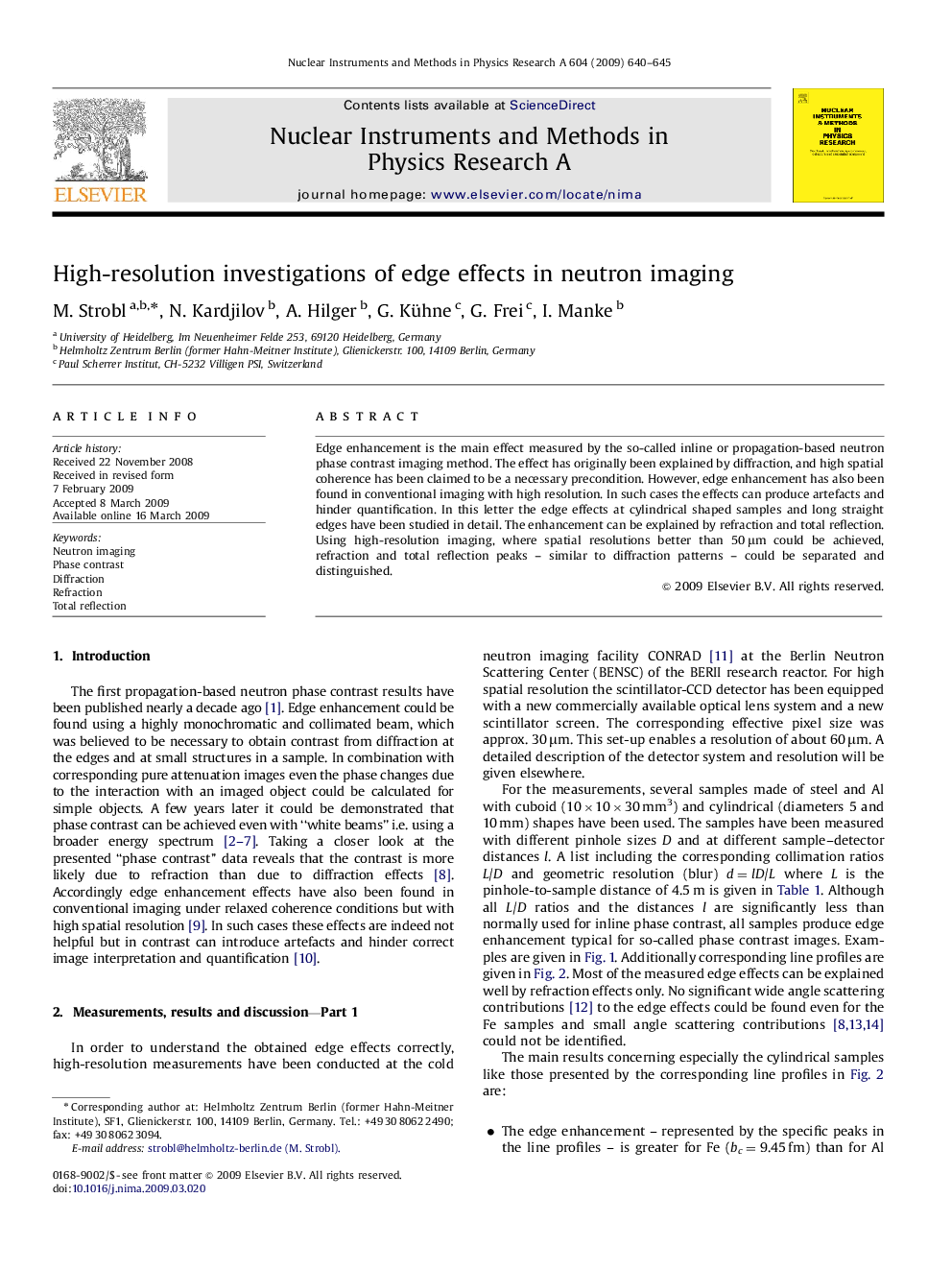| Article ID | Journal | Published Year | Pages | File Type |
|---|---|---|---|---|
| 1828343 | Nuclear Instruments and Methods in Physics Research Section A: Accelerators, Spectrometers, Detectors and Associated Equipment | 2009 | 6 Pages |
Edge enhancement is the main effect measured by the so-called inline or propagation-based neutron phase contrast imaging method. The effect has originally been explained by diffraction, and high spatial coherence has been claimed to be a necessary precondition. However, edge enhancement has also been found in conventional imaging with high resolution. In such cases the effects can produce artefacts and hinder quantification. In this letter the edge effects at cylindrical shaped samples and long straight edges have been studied in detail. The enhancement can be explained by refraction and total reflection. Using high-resolution imaging, where spatial resolutions better than 50 μm could be achieved, refraction and total reflection peaks – similar to diffraction patterns – could be separated and distinguished.
